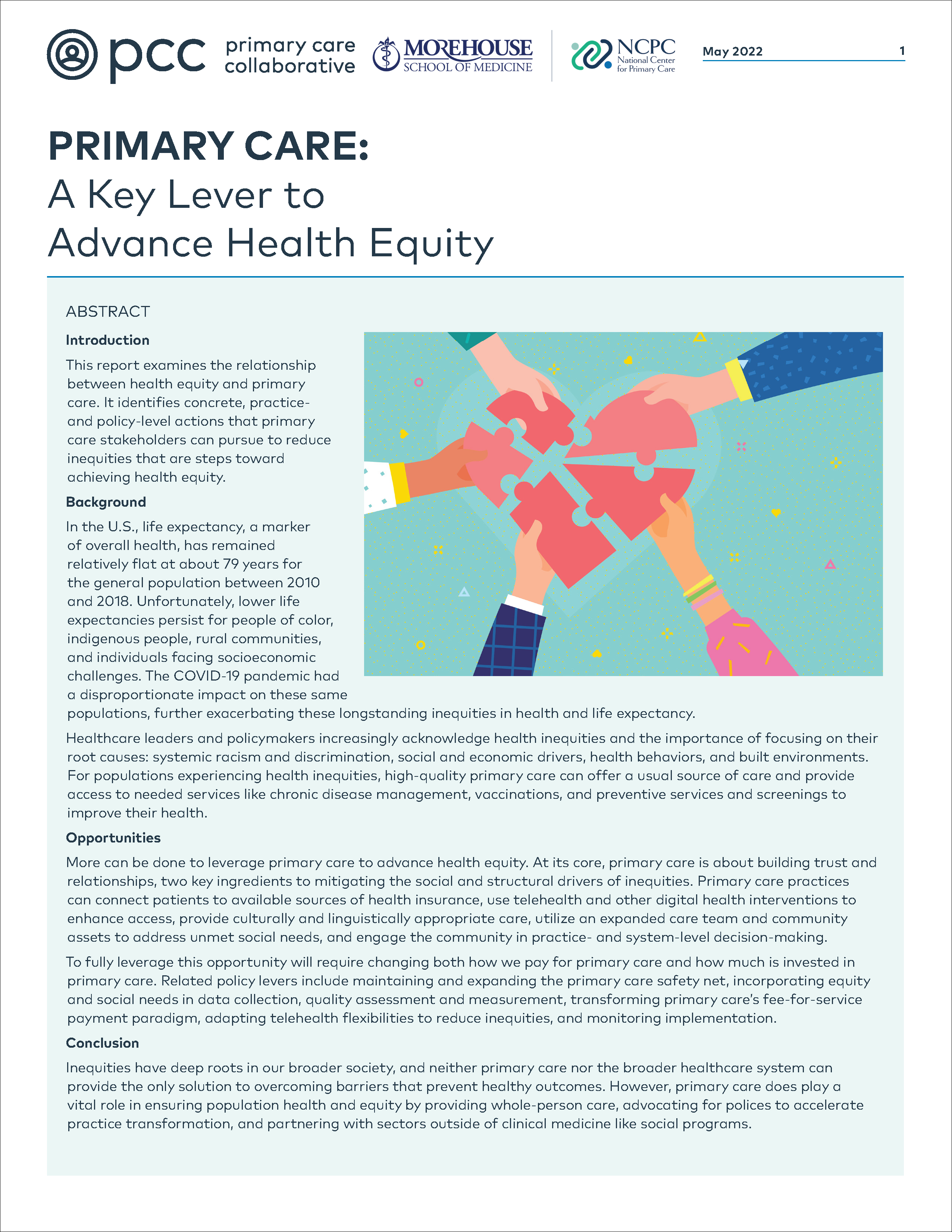You are looking at an archived version of our site. Please visit thepcc.org for a fresh, new experience!
You are here: Array » Primary Care: A Key Le ...
Primary Care: A Key Lever to Advance Health Equity
Abstract
Introduction
This report examines the relationship between health equity and primary care. It identifies concrete, practice and policy-level actions that primary care stakeholders can pursue to reduce inequities and take steps toward achieving health equity.
Background
In the U.S., life expectancy, a marker of overall health, has remained relatively flat at about 79 years for the general population between 2010 and 2018. Unfortunately, lower life expectancies persist for people of color, indigenous people, rural communities, and individuals facing socioeconomic challenges. The COVID-19 pandemic had a disproportionate impact on these same populations, further exacerbating these longstanding inequities in health and life expectancy.
Healthcare leaders and policymakers increasingly acknowledge health inequities and the importance of focusing on their root causes: systemic racism and discrimination, social and economic drivers, health behaviors, and built environments. For populations experiencing health inequities, high-quality primary care can offer a usual source of care and provide access to needed services like chronic disease management, vaccinations, and preventive services and screenings to improve their health.
Opportunities
More can be done to leverage primary care to advance health equity. At its core, primary care is about building trust and relationships, two key ingredients to mitigating the social and structural drivers of inequities. Primary care practices can connect patients to available sources of health insurance, use telehealth and other digital health interventions to enhance access, provide culturally and linguistically appropriate care, utilize an expanded care team and community assets to address unmet social needs, and engage the community in practice- and system-level decision-making.
To fully leverage this opportunity will require changing both how we pay for primary care and how much is invested in primary care. Related policy levers include maintaining and expanding the primary care safety net, incorporating equity and social needs in data collection, quality assessment and measurement, transforming primary care’s fee-for-service payment paradigm, adapting telehealth flexibilities to reduce inequities, and monitoring implementation.
Conclusion
Inequities have deep roots in our broader society, and neither primary care nor the broader healthcare system can provide the only solution to overcoming barriers that prevent healthy outcomes. However, primary care does play a vital role in ensuring population health and equity by providing whole-person care, advocating for polices to accelerate practice transformation, and partnering with sectors outside of clinical medicine like social programs.
| Attachment | Size |
|---|---|
| 1.23 MB |
Secondary menu
Copyright © 2024 Primary Care Collaborative




